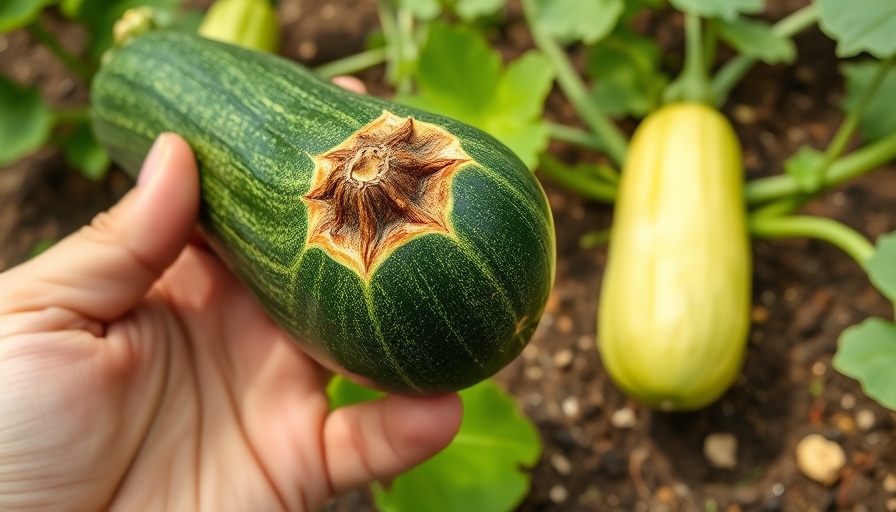
Understanding Blossom End Rot: It's Not Just a Disease
When gardeners set out to grow squash, the last thing they wish to encounter is blossom end rot. In essence, this isn’t a disease but a physiological condition caused by poor growing conditions. Essentially, blossom end rot (BER) occurs when plants, like squash, experience calcium deficiency, largely due to irregular watering habits. Too much or not enough water causes roots to lose their ability to absorb nutrients effectively. As the squash develops, brown and black spots emerge at the blossom end, turning mushy and inviting unwanted pests and diseases.
Preventing Blossom End Rot: Your Garden's Best Defense
Unfortunately, blossom end rot can affect a variety of garden crops including tomatoes and peppers, making it crucial to correct the problem early in the growing season. Achieving a balance of consistent soil moisture is essential. One practical approach is to install homemade watering devices, ensuring your plants receive a slow drip of water. For those in Muskegon, building a composting barrel or a rainwater harvesting system can also provide a sustainable source of moisture for your plants.
Common Pitfalls: Don’t Mistake It for Other Issues
Gardeners often mistake blossom end rot for conditions such as sunscald or cracking. By knowing the specifics of each symptom, though, one can take the right corrective actions. Unlike sunscald that affects fruit exposed to excess sunlight, blossom end rot typically begins at the bottom of the fruit and works its way up. Understanding these nuances can save your squash harvest.
Action Steps for Gardeners Facing Blossom End Rot
Once you identify blossom end rot, immediate action is essential. Ensure you’re applying a balanced, organic fertilizer, such as Espoma Garden-tone Organic Plant Food, which can provide necessary nutrients without overloading your squash with nitrogen, which can exacerbate the rot. Try constructing elevated planter boxes to improve drainage and reduce water pooling around the roots.
Future Trends: How Home Gardening is Evolving
As local gardening communities expand, awareness about blossom end rot and sustainable gardening practices is on the rise. In Muskegon, community workshops on designing a backyard utility house or building shaded areas for plants could greatly enhance gardening success rates. The DIY movement is redefining how we manage our outdoor spaces, offering innovative ideas like creating custom seating areas or upcycled flower displays.
Conclusion and Call to Action
Understanding blossom end rot and its implications can transform a gardener’s approach. Armed with this knowledge, homeowners can prevent such issues from deteriorating their harvests. For your summer gardening needs, don’t forget to reach out to a trusted local service. For expert lawn care, winter plowing, and property management, contact Norther-LawnCare.com, or call Everett Lucas at 231-450-3414 to help maintain your garden’s health!
 Add Row
Add Row 
 Add
Add 


Write A Comment